Review for RideBack: The Complete Series Collection
Introduction
There just isn't enough time in the day anymore. I first heard about RideBack at the start of the year, and despite my general dislike of the mecha genre in anime, there was enough in the blurb, a ballet dancer turned robotic motorcycle rider in a dystopian near future that intrigued me. It didn't hurt that Funimation were streaming it to the world on their Youtube channel, and my appreciation of the free and legal anime option induced me to make a mental note to watch it when I had a free moment. That was back in January. In the intervening months it has been dubbed and released on DVD and Blu-ray in the US, and then Manga Entertainment's DVD release was announced, and the check discs fell on my doormat, prodding that mental note. I don't know if the Funimation Youtube streams are still available, but the absence of free time in my life has become glaringly obvious. At least my first encounter with RideBack will be on a big, flat panel TV, which given that this anime is from Studio Madhouse, is just as it should be.
It's the year 2025, and the GGP organisation has taken over the world. Superior technological ability has given them the edge over the traditional nation states, and most nations decide to cooperate with their benign oversight. It doesn't make much difference to the average citizen though, whose lives are pretty much unchanged. Rin Ogata certainly wasn't expecting her world to change again, after losing her mother in the Great Earthquake, but she was intent on matching and surpassing her mother's ability as a ballet dancer. Her world changed again when a serious injury forced her to quit, and an average life of a college student beckoned. Then one day she wandered into the garage occupied by the college's RideBack club. RideBacks are a spin-off of that new technology, cybernetically enhanced robotic motorcycles, with stabilising arms, and the ability to transform into humanoid skating machines. A rider that can learn to control and master the vehicles can make them do fantastic things. That first day, Rin Ogata learns that she can make the club's Fuego model RideBack dance, and that she is an instinctive natural at riding them. But the GGP is keeping an eye out for individuals that stand out from the pack, especially with their proprietary technology, all the more so in a world where their rule isn't absolute, and terrorist groups exist to upset the status quo.
Manga Entertainment present the twelve episode RideBack series across 2 discs.
Disc 1
01. The Crimson Iron Horse
02. Challenge From Tamayo!? S.L.F. Spread Legs Form
03. And There's The Flag
04. A Close Call For Shoko
05. The Mysterious RideBack Girl
06. The Lightning-Fast RideBack
Disc 2
07. Crime and Punishment
08. Get Ride! The Chosen One
09. In the Sunny Garden
10. Master of the War
11. Cloudy Followed By Occasional Rain…
12. To the Stage of Light
Picture
RideBack gets a solid 1.78:1 anamorphic transfer on these two dual layer discs. As is so pleasant to witness these days, it's a native PAL conversion, which given the stupendous Madhouse animation is practically a requirement. The image is clear and sharp throughout, detail levels are strong, and the only slight issue might be the finest of aliasing apparent at the limits of the DVD format. The character designs are pretty generic for anime, although individual and quirky enough to stick in the mind. Where RideBack excels is in the actual animation itself, which is vibrant, fluid, detailed and energetic. It flawlessly blends traditional 2D and 3D animation, and while the opening ballet performance is a taster of the effort put into the show, the actual RideBack action sequences are adrenaline fuelled and gripping. The show's direction too is sublime, with wonderful use of light and dark, mood and atmosphere, action balanced with reflection. RideBack looks stunning. In the US RideBack was delivered on a Blu-ray as well as the DVD. Manga Entertainment have drawn back of late from releasing multi-part shows on Blu-ray, but are still committed to bringing select 12 or 13 episode series which can be released in one go. RideBack is one that they ought to have selected.
Sound
RideBack gets the usual DD 5.1 English, and DD 2.0 Japanese Stereo options, with translated English subtitles and a signs only track. The first thing you'll notice about RideBack is the exceptional opening theme from Mell, and it's an indication of the quality of the show's music, strong and powerful at times, subtle and emotive at others. I went with the original language track, and the stereo set off the show well, giving it a nice bit of space and dynamism to the action. Of course that gains extra dimension with the English dub, delivered as it is in 5.1 flavour. It helps too that the dub is one of the good ones, well cast and performed with a passion for the source material. The subtitles are legible, well timed, and free of error throughout.
Extras
RideBack gets some static menus with some nifty design to them, as well as the usual jacket pictures.
Disc 1 simply has a commentary for episode 4, with ADR director Terri Doty in the booth with Kristi Bingham (Shoko), and Tia Ballard (Rin). It's a fairly average Funimation commentary, one part useful, one part giggles, and one part mutual backslapping. Be warned that there are substantial spoilers for the series here; so don't listen to the commentary until after you've watched the story in its entirety.
Disc 2 has the textless credit sequences.
It also has an audio commentary on episode 10, where this time ADR director Terri Doty joins Micah Solusod (Haruki) and Trina Nishimura (Suzuri) in the audio booth. It starts off as the usual Funimation gigglefest with mutual backslapping, but as the episode progresses becomes a little more sombre in tone.
Conclusion
I liked RideBack a lot, even though it turned out to be quite a deceptive little show. Or is that because it was a deceptive little show? The deception is that it starts off in a way that leads you to expect something entertaining, innocuous and good, but turns into something deeper, darker, thoughtful, and still good. It kept providing little jolts of the unexpected through its twelve episodes, and that kept me on the edge of my seat in a way that few anime shows ever do anymore, now that I've grown more cynical, jaded, and basically having seen so many of them. If you want, I could stop right now, sign off with an 'Instant Purchase' recommendation, and leave you to discover its delights all for yourselves. I suppose I should elaborate though, however consider the following paragraphs as potential spoilers, if not for the story, then for the surprising directions this show takes.
The first three episodes are a complete fake out, that's despite the show setting its stall at the beginning with a prologue about the world situation in 2025, and there being constant background chatter in news reports and the like hinting at the show's eventual political and dramatic edge. But the main focus is on Rin Ogata, and her ambitions to be a ballet dancer like her late mother, thwarted by injury and her world changing as a result. We join her after she has retired from dance, and is now just a normal student starting college. She has the unwavering support of her best friend Shoko, and quickly makes a new friend in the dance fan Suzuri, whose eagerness and adulation is tempered by a likeable charm and honesty.
But it's when Rin encounters the RideBack club that everything changes. The robotic motorcycles which can link with their riders, and which can stand up on two wheels to become vaguely humanoid looking skaters, are as close to dancing that Rin has come since her accident, and she finds something new to be passionate about. It also doesn't hurt that Suzuri can be enthusiastic about her RideBack skills instead of the ballet which is now denied her. She also finds a new group of friends in the club, the brash and arrogant racer Tamayo, the likeable fellow students Kawai and Hishida, and the enigmatic technician and club advisor Okakura. As Rin explores the world of RideBacks more and more, so her passion for the machines increases, as do her skills and talents. It also seems she has found her perfect match in the Fuego RideBack, a temperamental machine that few can master, but for her is an extension of her own body. But such an obvious growth in her abilities catches the attention of the wrong people.
Up to this point, I thought I was watching another Ah My Goddess, albeit without the divine object of affection. The setting of Ah My Goddess is in another college, and the main character in that show is a college student that is a member of a racing club. A fair bit of that show revolves around racing, about the joys in being part of a group working towards a common goal, and a passion for technology and speed. It were these same aspects that I saw in the opening episodes of RideBack, and I would have been perfectly happy had it trod the same path of innocuous, light hearted, and indeed heart-warming gentle character comedy.
Then episode 4 happens and the game completely changes as the politics and world situation comes to the forefront. We already know that the GGP have effectively taken control of the world, that they are a former terrorist group that gained legitimacy by proving the old world order impotent in exerting its old technology of warfare, and that they used RideBack technology or something similar to manage it. Now the GGP dictates global politics, and local governments have to kowtow to their demands. We know at this point that Tamayo is connected, her father is a politician, and her brother is high up in the police force. We know that the GGP is plagued by terrorists of their own, the BMA who aren't all that pleased at the totalitarian new world order. We also know that Okakura has something of a past with the GGP and RideBacks, the reason why he is such a technical wizard now. Episode 4 is where all of this begins to matter, when a GGP commander named Romanov Kallenback comes to Japan to take control of the security situation, using the presence of BMA terrorists as an excuse.
To welcome him, the BMA have a reception planned, an attack on a major building in the city, which is where Shoko happens to be taking a day to go shopping. Naturally Rin's first instinct is to save her friend, and with the RideBack skills she has learned, and the Fuego at her control it seems to be not beyond the realm of possibility. But rescuing Shoko means not only breaking the GGP cordon and breaking past the terrorists to find Shoko, it means breaking out again, all in the middle of a terrorist attack. Not only does she humiliate the GGP, but she also gets painted as a terrorist herself. Seeing the carnage, the mayhem and the injuries and fatalities that result from the terrorist outrage and the GGP response at first hand, also makes Rin confront the fact that the RideBack technology isn't as benign as she's been letting herself believe, that her actions in control of the machine have consequences that reach far beyond the racetrack. It's a thread that continues and grows in importance as the story progresses.
Romanov and the GGP use the RideBack Girl as a poster child for the BMA and an excuse to take more drastic actions in the battle against terrorism, including drafting in powerful police RideBack units, antagonising the populace, which the BMA aren't above using to their own ends. Despite her wishes, Rin is drawn deeper and deeper into the conflict and the politics, despite her initially pure desire to ride as a means of recapturing the joy she once felt on stage. As the crackdown progresses, the show gets progressively darker and darker, with tragedy heaped upon tragedy. It's here that the show's strengths become clear, most potently in the writing. Its tale of totalitarianism versus terrorism will probably always be relevant, but it certainly is most relevant now, given that we live in a world where our governments are prone to limit and restrict our civil liberties in the war on terror, initially because we gave them a mandate to do so, but now, more and more often against our wills and to the detriment of our way of life. It's getting to the point now where those with legitimate grievances against authority are labelled terrorists so that they can be conveniently removed. At the same time, there are parts of the world where previous totalitarian regimes have been removed through popular will and through relatively peaceful means, all of which makes RideBack utterly compelling to watch.
Also, its characters are more rounded and thoughtful, there's something very honest and emotional about Rin's journey, her joy and her passion, and her guilt and self-doubts, and the story does a great job in exploring her dilemmas without detracting from the narrative. It's mirrored in the Okakura character, who himself is running from a past, hiding from his potential, but who will be forced to confront it to deal with what happens in the end. Even the supporting cast, Shoko and Suzuri, Tamayo and Hishida have more than the usual depth to them.
The only flaw that I can find is a contrivance at the conclusion of the story. Rin is a committed pacifist, reiterated time and again in the show, the very thought of violence and bloodshed repels her, but the story is such that we need her as the heroine to have a cathartic moment, to fight back against the coincidence of fate that opposes her. And at the end of the show, the GGP, which up to that point had been happily using humans, soldiers and policemen against their BMA foes, decide to adopt lifeless robots to finish off the task. All of which is terribly convenient in giving Rin a foe she can in all conscience take a stand against. But it's a small thing given how good the story turns out to be, and how simply amazing, and perfect the end is.
The good shows are almost always understated. My worry is that anyone browsing a DVD aisle, real or virtual, will spot the confluence of ballet dancer and robotic motorcycle in the blurb and shy away towards the more obvious charms of something like Strike Witches, or Dance in the Vampire Bund. That would be a mistake though, as RideBack is an excellent series, action packed and thrilling, with great animation and music, but also with a thoughtfulness and intelligence to it that is rare in popular anime. RideBack should be at the top of your list when you're thinking of which anime to buy.






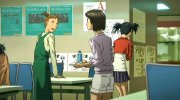















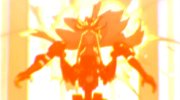



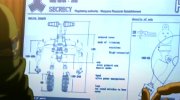
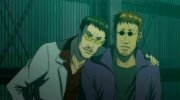












































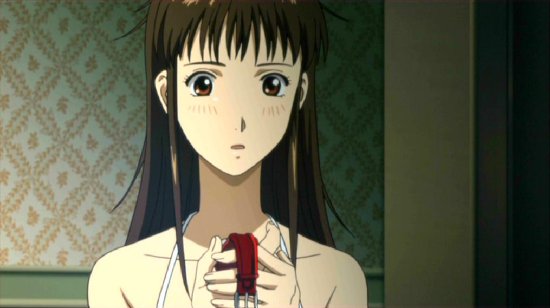

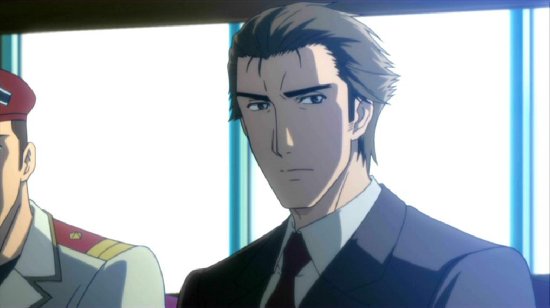


Your Opinions and Comments
Be the first to post a comment!